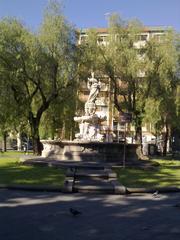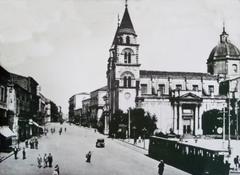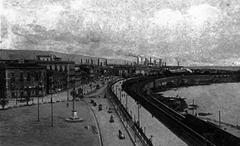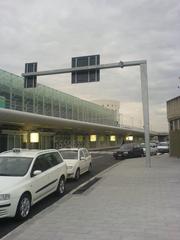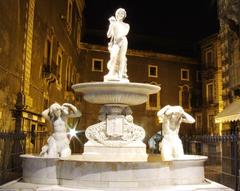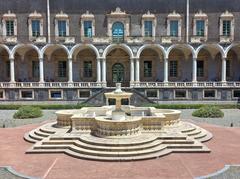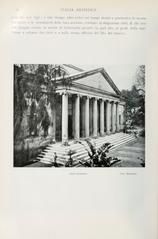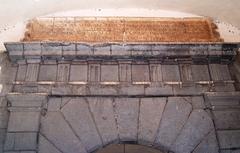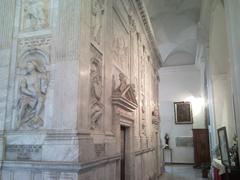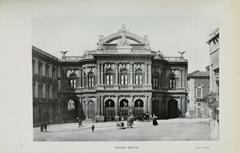
Fontana di Cerere Visiting Hours, Tickets, and Historical Sites in Catania, Italy
Date: 31/07/2024
Introduction
The Fontana di Cerere, or the Fountain of Ceres, stands as a monumental testament to Catania’s rich historical and cultural tapestry. Nestled in Piazza Cavour, commonly referred to as Piazza Borgo, this 18th-century marvel is a harmonious blend of hydraulic ingenuity and Baroque sculptural artistry. Named after Ceres, the Roman goddess of agriculture and fertility, the fountain embodies the spirit of resilience and renewal that Catania embraced following the catastrophic earthquake of 1693. Visitors are drawn to its intricate marble designs and the serene ambiance it creates in the bustling piazza (ViaggiArt). This guide offers a comprehensive exploration of the Fontana di Cerere, delving into its historical origins, architectural features, cultural significance, and practical visitor information to ensure a memorable and enriching experience in Catania.
Table of Contents
- Introduction
- Origins and Construction
- Architectural Features
- Historical Significance
- Cultural Impact
- Restoration Efforts
- Practical Visitor Information
- Mythological and Symbolic Elements
- Influence on Local Architecture
- Visitor Experience
- FAQ
- Conclusion
Origins and Construction
The Fontana di Cerere was constructed in the 18th century, during a period when Baroque architecture heavily influenced Catania. This style is evident in the fountain’s elaborate and intricate design, which features a white marble pedestal and basin adorned with mythological and allegorical sculptures. Key figures include representations of the two rivers of Catania, the Simeto and the Amenano, along with shells, putti, and allegorical female figures.
Architectural Features
The Baroque design of the Fontana di Cerere is characterized by its dynamic compositions and rich decorations. The use of red granite with many streaks enhances the visual appeal, creating a striking chromatic effect. This elaborate design not only serves aesthetic purposes but also symbolizes the city’s resilience and rebirth following the devastating earthquake of 1693.
Historical Significance
Constructed during the extensive reconstruction period after the 1693 earthquake, the Fontana di Cerere was part of the efforts to rebuild and enhance Catania’s aesthetic and cultural landscape. The Baroque style embodied in the fountain represents the city’s resilience and desire for rebirth (source).
Cultural Impact
Over the years, the Fontana di Cerere has evolved into a cultural symbol for the people of Catania. It serves as a popular gathering spot in Piazza Cavour, attracting both locals and tourists who come to admire its beauty and enjoy the serene ambiance. The fountain is also a focal point for various local events and celebrations in the historic Borgo district (source).
Restoration Efforts
The Fontana di Cerere has faced the challenges of time and environmental wear and tear. Recent restoration efforts, completed in July 2024, aimed to preserve its historical and cultural value. Funded by the tourist tax, these efforts highlight the importance of tourism in maintaining Catania’s cultural heritage (source).
Practical Visitor Information
Visiting Hours
The Fontana di Cerere is accessible to the public at all hours, making it a convenient stop for both early risers and night owls. However, for the best experience and lighting, visiting during daylight hours is recommended.
Tickets
There is no admission fee to visit the Fontana di Cerere, as it is an open public monument situated in Piazza Cavour.
Travel Tips
- Location: Piazza Cavour, Catania, Sicily
- Accessibility: The area around the fountain is pedestrian-friendly and accessible to those with mobility issues.
- Nearby Attractions: Don’t miss the nearby Elephant Fountain and the historic sites of Catania, such as the Catania Cathedral and Ursino Castle.
- Best Time to Visit: Spring and autumn offer pleasant weather for exploring the fountain and the surrounding area.
Mythological and Symbolic Elements
The Fontana di Cerere is rich in mythological and symbolic elements that reflect Catania’s cultural and historical context. The figure of Ceres symbolizes fertility and agriculture, fitting for a city with a deep connection to the natural world and agricultural activity. The inclusion of the two rivers, Simeto and Amenano, highlights the importance of water and natural resources to Catania’s identity (source).
Influence on Local Architecture
As a prime example of the Baroque style, the Fontana di Cerere influences much of Catania’s architecture. The fountain’s intricate sculptures and use of contrasting materials reflect the broader architectural trends of its time, symbolizing the city’s resilience and rebirth after the 1693 earthquake (source).
Visitor Experience
Today, the Fontana di Cerere remains a major attraction in Catania. Its central location in Piazza Cavour makes it easily accessible, and its historical and cultural significance make it a must-see for anyone interested in the city’s rich heritage. Visitors can enjoy the serene ambiance of the piazza, admire the intricate details of the fountain’s design, and learn about its history and mythology. The recent restoration efforts ensure that the fountain remains a stunning example of Baroque art and a testament to Catania’s enduring spirit (source).
FAQ
Q: Are there guided tours available for the Fontana di Cerere?
A: While there are no specific guided tours for the fountain itself, many city tours of Catania include a visit to Piazza Cavour and the Fontana di Cerere.
Q: Is the Fontana di Cerere illuminated at night?
A: Yes, the fountain is beautifully illuminated at night, providing a different perspective of its intricate design.
Q: Are there any dining options near the Fontana di Cerere?
A: Yes, Piazza Cavour and the surrounding areas offer a variety of dining options ranging from casual cafes to fine dining restaurants.
Conclusion
The Fontana di Cerere is more than just a fountain; it is a symbol of Catania’s rich history, cultural heritage, and artistic achievements. Its intricate design, mythological elements, and historical significance make it a valuable asset to the city and a fascinating subject for visitors and locals alike. The recent restoration efforts have ensured that this beautiful monument will continue to inspire and captivate for many years to come.

